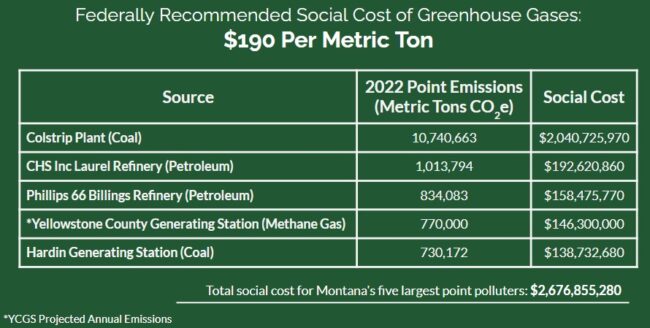By Nick Fitzmaurice

The social cost of greenhouse gases is a metric that estimates the economic damage caused by each additional ton of carbon dioxide and other greenhouse gases emitted into Earth’s atmosphere. This metric allows decision-makers to internalize the cost of greenhouse gas emissions that were previously externalized. The federal government has calculated this cost since 2009, currently estimated at $51 per ton emitted, but the U.S. Environmental Protection Agency proposed increasing the value to $190 in November 2022.
The Montana Department of Environmental Quality (DEQ) could use this metric in its analyses under the Montana Environmental Policy Act to assess the impact of projects’ forecasted greenhouse gas emissions or to demonstrate the social cost averted through projects that eliminate or prevent greenhouse gas emissions. Fourteen states already use this social cost to assess greenhouse gas emission climate impacts, including Colorado, Nevada, and Washington. Additionally, this social cost metric has been federally recommended for use in National Environmental Policy Act environmental reviews, as well as in federal agency budgeting, procurement, and other decision-making. The U.S. Department of Transportation and the U.S. Postal Service are already utilizing the metric. DEQ could be doing the same.
This article was published in the December 2023 issue of Down To Earth.

